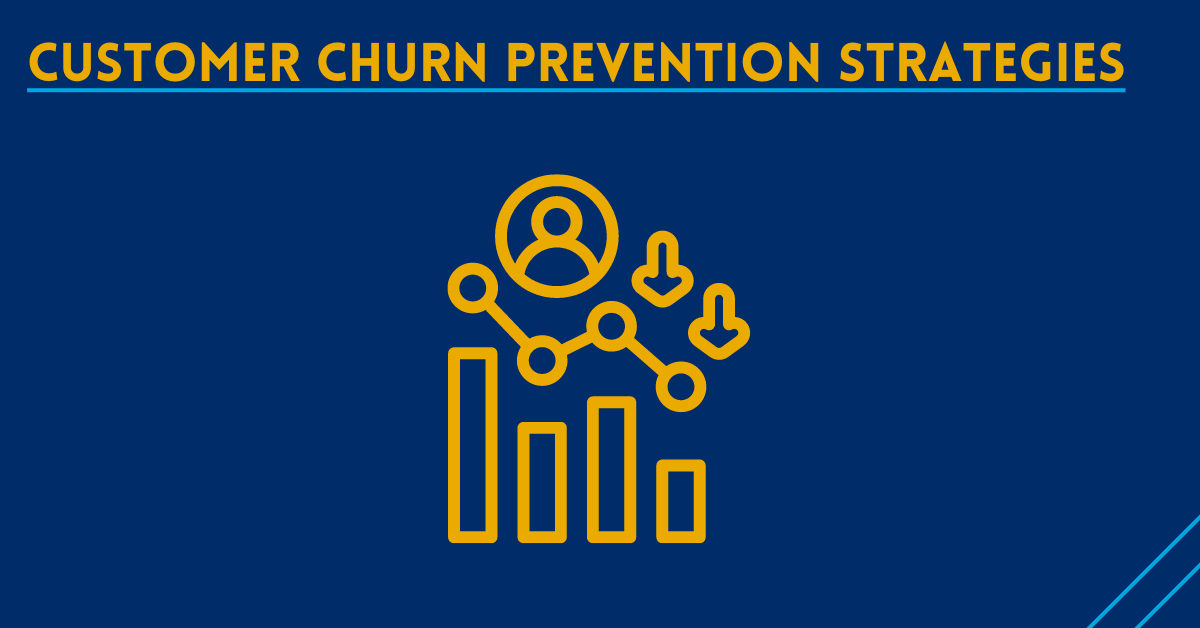More than likely, saving at-risk businesses and reducing the chances of customer churn is a key area of focus for your business today.
This is leading executives to ask more questions about churn prevention such as:
- What subtle, or not-so-subtle, signs are we missing that customers aren’t happy with our products, services, or people?
- Are we overlooking risks to existing revenue and missing opportunities to prevent customer churn?
- Have we taken the time to learn from losses and make necessary changes to reduce future customer churn?
Besides administering a customer satisfaction survey to get to the root cause of dissatisfaction, these items can ensure your organization is doing everything to prevent customer churn and minimize the financial impact of unhappy customers.
- Look For Warning Signs
- Collaborate With Customers
- Customer Focused Culture
- Empower Employees To Enhance Experience
Look for early warning signs of customer dissatisfaction
Customer frustration or decreasing engagement can take many forms, such as usage decline or a spike in customer support tickets – as are contacts who are becoming less responsive or are starting to decline invitations. Another indicator may be delinquent payments.
If you’re not monitoring a myriad of areas and departments aren’t communicating, you run the risk of being fired by customers before you’re even aware there’s a problem.
Most customers are forgiving if they know you are watching and listening and you address their challenges quickly. This is especially true of promoters. In fact, research has shown that quickly and successfully addressing a customer’s concern can actually increase loyalty.
A critical customer churn prevention strategy is establishing formal listening posts to allow your customers to share their feedback on your company’s performance.
Inspire employees to play a role in the customer experience
With well-documented playbooks, people across the company can serve as an escalation point and effectively deal with unhappy customers.
Of course, there are some important requirements, such as deep knowledge of your products/services, high emotional intelligence, and experience with handling challenging conversations, among others. But most of these things can be taught.
With a little extra service-oriented training, subject matter experts, in particular, can be powerful ambassadors for the organization.
Recruiting team members not only reduces the burden for those handling the bulk of the escalations, but it also enables other employees to have a direct link to the voice of the customer.
Continuously collaborate with customers to minimize dissatisfaction
The most successful businesses incorporate customer input into nearly everything they do – how they invest, how they allocate resources, how they structure their team, how they hire, how they compensate, and so on.
This isn’t to say you need to implement everything your customers suggest, but their voices should be represented in any meeting where important decisions are made. Trust us – customers will appreciate your effort.
Elevate your company’s culture of customer service excellence
Customer needs are continually evolving but customer service excellence should always be a core part of your company’s DNA.
If your organization isn’t continually solving new and future problems, offering insights that are actionable, and demonstrating a meaningful ROI for its services, then your business is at-risk for larger numbers of dissatisfied customers (and employees for that matter).
To help ward off customer churn, the customer experience must be led by the C-Suite and maintained by everyone in the company. That’s because everyone ultimately impacts the customer’s journey – directly or indirectly.
Show appreciation for employees who go the extra mile for customers
We’ve all had experiences where happy and engaged employees have greatly impacted our experience with a particular brand. One that comes to mind is the employees at Southwest Airlines.
What motivates these employees to embrace a customer service excellence mindset? Recognition, empowerment, and a reward structure give employees a true voice in the company.
We recommend that you frequently recognize and reward – both publicly and privately – those employees who continually embody your company’s commitment to the customer experience. Not only will this drive the behaviors across all teams – customers are sure to be positively impacted as well.
Understanding The Impact of Unhappy Customers
Preventing customer churn can be a daunting task. That’s why we suggest you look across the organization for any hidden red flags that may be influencing or contributing to customer dissatisfaction.
Once these factors are uncovered and addressed, you’ll be well on your way to delivering better customer experiences and increasing customer retention in the process.

